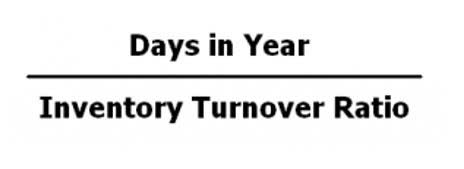
Conversely, a low inventory turnover ratio indicates that the company is not effectively utilizing its resources, which can significantly impact its bottom line. This ratio can be used to evaluate how well a business manages its stock, reflecting its ability to produce income from sales and determine its liquidity status.Ī higher number means that the business rapidly sells off products, making it more efficient and profitable. It looks at how quickly a company has sold off its stock to make new orders to maximize profits. The Inventory Turnover Ratio is a financial metric used to measure the productivity of a company’s inventory. Read on to unlock the secrets of inventory efficiency! What is Inventory Turnover Ratio?

In this post, we’ll explain everything you need to know about understanding and utilizing inventory turnover for your business. With an understanding of this efficient process, any business can learn to better manage its stockpiles and create a successful and streamlined inventory plan. The answer lies in comprehending a key metric known as inventory turnover. This work is licensed under a Creative Commons Attribution-ShareAlike 4.0 License.Do you ever wonder how businesses can keep up with inventory demands without overstocking? Have you ever noticed that some businesses always have the right product on hand while others seem perpetually out of stock? As such, only intra-industry comparison will be appropriate. However, a car dealer will have a low turnover due to the item being a slow moving item. Making comparison between a supermarket and a car dealer, will not be appropriate, as a supermarket sells fast moving goods, such as sweets, chocolates, soft drinks, so the stock turnover will be higher. When making comparison between firms, it's important to take note of the industry, or the comparison will be distorted. This is a major concern in fashion industries.
:max_bytes(150000):strip_icc()/latex_9418d2dc3ff529146c36a79e2640b1a2-5c561ba646e0fb00013fb6c4.jpg)
Items that turn over more quickly increase responsiveness to changes in customer requirements while allowing the replacement of obsolete items.Reducing holding cost increases net income and profitability as long as the revenue from selling the item remains constant.The organization spends less money on rent, utilities, insurance, theft, and other costs of maintaining a stock of good to be sold. Increasing inventory turns reduces holding cost.The purpose of increasing inventory turns is to reduce inventory for three reasons. Stock turnover also indicates the briskness of the business. In this article, the terms "cost of sales" and "cost of goods sold" are synonymous.Īn item whose inventory is sold (turns over) once a year has a higher holding cost than one that turns over twice, or three times, or more in that time. Additionally, firms may reduce prices to generate sales in an effort to cycle inventory. However, cost of sales is recorded by the firm at what the firm actually paid for the materials available for sale. In the event that the firm had an exceptional year and the market paid a premium for the firm's goods and services, then the numerator may be an inaccurate measure.

Sales are generally recorded at market value (i.e., the value at which the marketplace paid for the good or service provided by the firm). Cost of sales is considered to be more realistic because of the difference in which sales and the cost of sales are recorded. Cost of sales yields a more realistic turnover ratio, but it is often necessary to use sales for purposes of comparative analysis. Some compilers of industry data (e.g., Dun & Bradstreet) use sales as the numerator instead of cost of sales. This often can result in stock shortages. However, in some instances a low rate may be appropriate, such as where higher inventory levels occur in anticipation of rapidly rising prices or expected market shortages.Ī low turnover rate may point to overstocking, obsolescence, or deficiencies in the product line or marketing effort.Ĭonversely, a high turnover rate may indicate inadequate inventory levels, which may lead to a loss in business as the inventory is too low.

Inventory turnover is also known as inventory turns, stockturn, stock turns, turns, and stock turnover. The equation for inventory turnover equals the cost of goods sold divided by the average inventory. In accounting, the Inventory turnover is a measure of the number of times inventory is sold or used in a time period, such as a year.


 0 kommentar(er)
0 kommentar(er)
